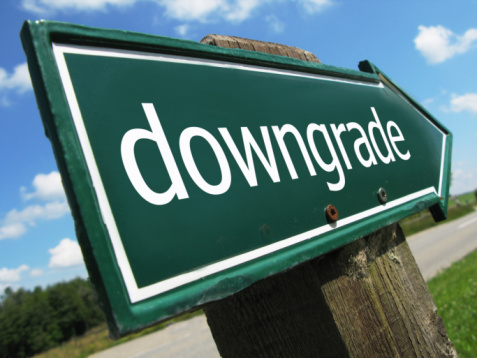Even long after the Gulf oil spill, BP PLC (NYSE: BP) has had a rough run of things. It does not help that two analysts are making near identical calls on the stock implying a slight downside to current prices.
Citigroup downgraded BP to a Neutral rating from Buy, namely for concerns over valuation and some uncertainty. Citigroup left its price target in pence at 455 per share. The firm thinks the market now better reflects the inherent value in BP. At the same time, Citigroup believes that BP needs to be balanced against the risks it faces in the market, specifically on narrowing growth optionality and on the remaining fallout from the Macondo well explosion.
Merrill Lynch downgraded BP to a Neutral rating with a $40 price objective, implying a slight downside of 4% from current prices. Note that the valuation and share count of BP is different on the London Exchange than on the New York Stock Exchange. In terms of pence this price objective translates to 455, and each American depository share (ADS) is equivalent to six shares of the stock on the London Exchange, closely valuing it to $40.
The Neutral rating comes from the firm seeing a limited absolute and relative valuation upside.
ALSO READ: Low Crude Oil Prices Leave Thousands of U.S. Wells Uncompleted
BP has an ongoing Phase 3 trial that will determine penalties payable under the Clean Water Act. The worst case penalties of $13.7 billion would exceed BP’s provisions by roughly $10 billion, However, Merrill Lynch believes this would not threaten BP’s capacity to maintain its dividend.
Within this call, Merrill Lynch also updated its near-term foreign exchange and macro assumptions across the sector, as well as downgrading its base case Brent oil price forecast for 2017 to $70 per barrel from $75, and 2018 to $80 per barrel from $95.
Merrill Lynch wrote:
Within our global Super major framework, BP shows a share of production from long life assets at peer group average. We believe BP’s share price now reflects the diminishing risks from outstanding litigation uncertainty in the US. With its relatively low gearing, BP should be able to weather potentially increased claims or fines as well as oil prices lingering lower for longer.
Looking at its chart, BP is outperforming quite a few major oil stocks so far this year, as it is up nearly 10% year-to-date. Supermajors Exxon and Chevron are down at least 4% on the year.
Recently, oil prices have made a stand, closing out last week over the $50 dollar mark every single day. This might lead many to believe that oil prices have already bottomed out and that this industry stands to make a strong recovery.
ALSO READ: 5 Oil and Gas Stocks Analysts Want You to Buy
Tuesday afternoon, shares of BP were up about 1.6% to $41.90. The 52-week trading range is $34.88 to $53.48, and the stock has a consensus analyst price target of $42.69. BP currently trades at 22.7 times its 2015 consensus expected earnings.
The Average American Has No Idea How Much Money You Can Make Today (Sponsor)
The last few years made people forget how much banks and CD’s can pay. Meanwhile, interest rates have spiked and many can afford to pay you much more, but most are keeping yields low and hoping you won’t notice.
But there is good news. To win qualified customers, some accounts are paying almost 10x the national average! That’s an incredible way to keep your money safe and earn more at the same time. Our top pick for high yield savings accounts includes other benefits as well. You can earn up to 3.80% with a Checking & Savings Account today Sign up and get up to $300 with direct deposit. No account fees. FDIC Insured.
Click here to see how much more you could be earning on your savings today. It takes just a few minutes to open an account to make your money work for you.
Our top pick for high yield savings accounts includes other benefits as well. You can earn up to 4.00% with a Checking & Savings Account from Sofi. Sign up and get up to $300 with direct deposit. No account fees. FDIC Insured.
Thank you for reading! Have some feedback for us?
Contact the 24/7 Wall St. editorial team.




